Are you looking to improve your website’s search engine rankings?
If so, conducting a SERP analysis can provide you with valuable insights into your competition and help you identify opportunities for optimization.
SERP analysis is like peeking behind the curtain of Google’s search results to understand what’s happening and how to make your website stand out.
But what exactly is SERP analysis, and why should you care?
In this post, we’ll discuss a step-by-step process for performing a SERP analysis effectively. So, without any further ado, let’s get started.
1 What is SERP Analysis?
SERP Analysis, or Search Engine Results Page Analysis, refers to examining and evaluating the results displayed by search engines in response to a particular query.
It involves studying elements such as organic search results, paid advertisements, featured snippets, People Also Ask (PAA) boxes, and other search features that appear on the SERP.
By understanding these components, SERP analysis aims to gain insights into audience behavior, search intent, competitor strategies, and opportunities for improving website visibility and performance in search engine rankings.
2 Different Types of SERP Results
When you enter a query into a search engine, you encounter various types of Search Engine Results Pages (SERPs), each offering different information. Let us now discuss the various types of SERP results.
2.1 Organic Search Results
The first type, organic search results, are the listings displayed by search engines based on their relevance to the user’s query and perceived quality.
These listings are not influenced by paid advertisements and are determined algorithmically by search engines like Google, Bing, and Yahoo.
Organic search results typically include webpage titles, URLs, meta descriptions, and rich snippets, providing the audience with information to help them decide which result to click on.
For instance, when searching for “best hiking shoes,” Google will display organic results listing top-rated hiking boots along with their features and reviews.
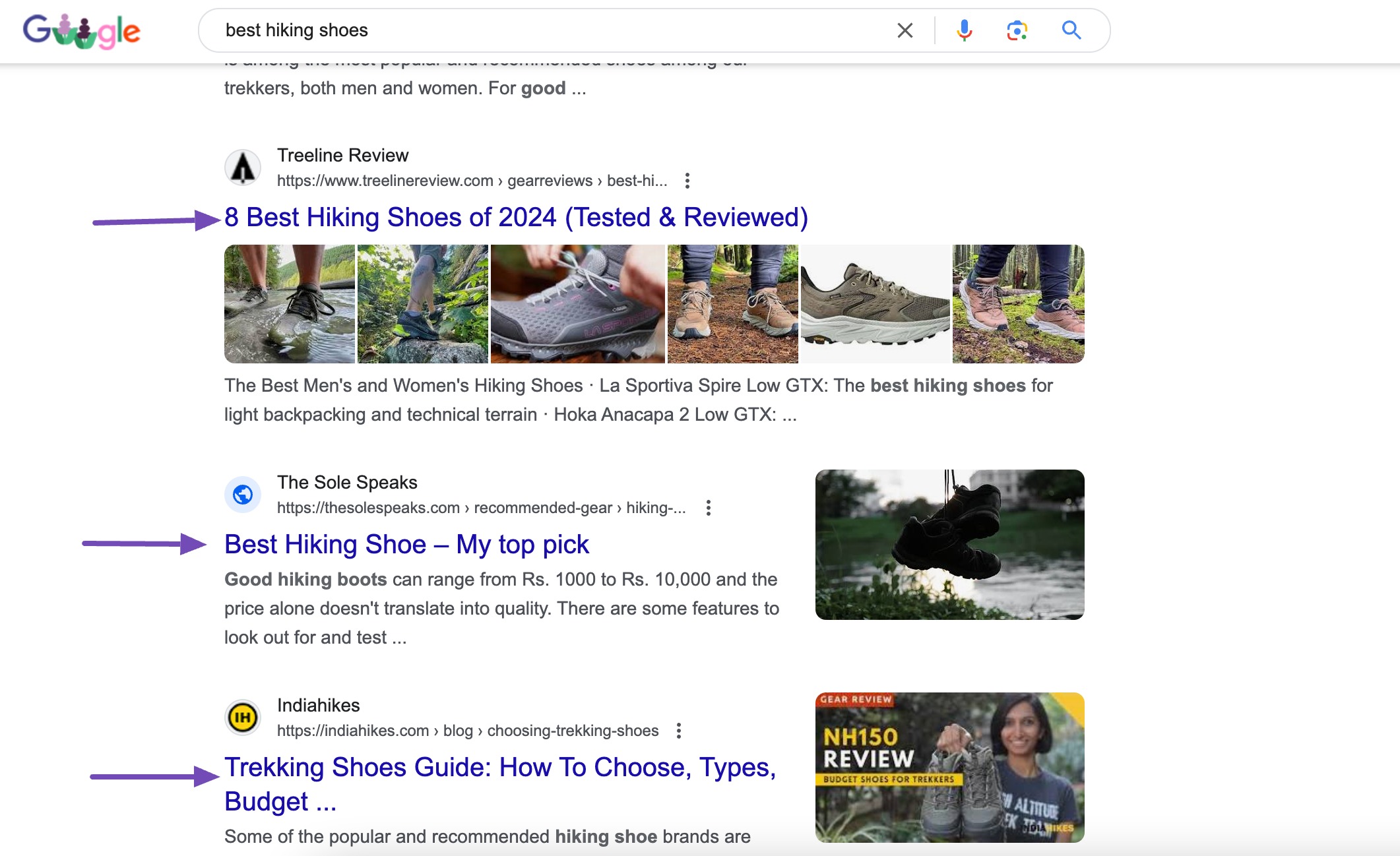
2.2 Paid Result
Paid search results, also known as sponsored listings or pay-per-click (PPC) ads, are advertisements displayed prominently on the SERP.
Advertisers bid on keywords relevant to their business, and their ads appear when the audience searches for them.
Paid search results are usually marked as “Ad” or “Sponsored” and generally appear at the top of the SERP, in a sidebar, or at the bottom of the page.
For instance, searching for “buy iPhone” yields paid results from Apple’s official website or authorized retailers.
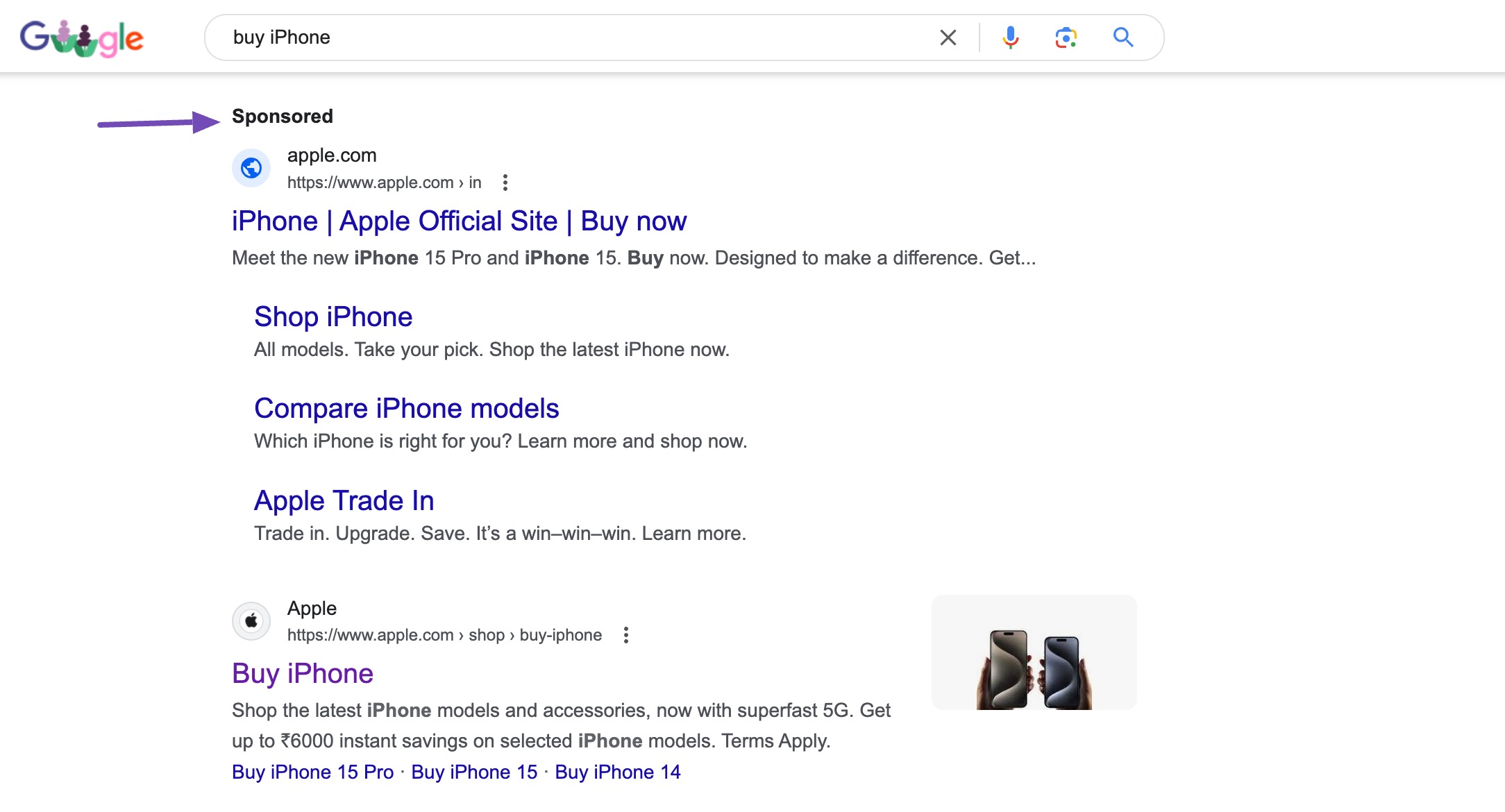
2.3 Featured Snippets
Featured snippets are concise summaries of information extracted from web pages that Google displays in a special box at the top of the SERP.

These snippets aim to give the audience quick answers to their queries without clicking through to a website.
Featured snippets can take various forms, including paragraphs, lists, tables, and charts, depending on the nature of the query and the available content.
For instance, a search for “how to bake a cake” can yield a featured snippet showing step-by-step instructions.
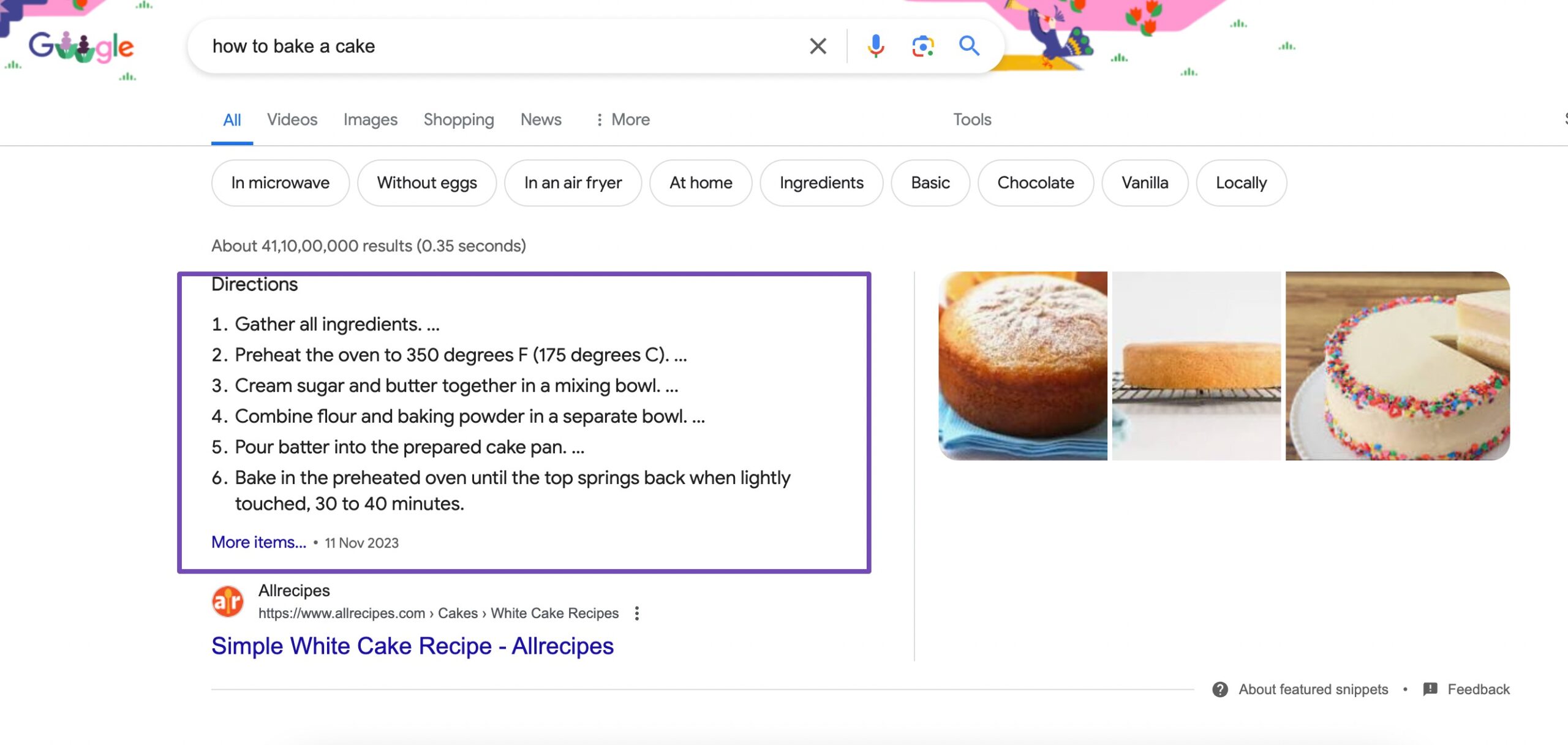
2.4 People Also Ask (PAA) Boxes
People Also Ask (PAA) boxes are interactive elements on the SERP that display related questions based on the user’s query.
When the audience clicks on a question in the PAA box, it expands to reveal a brief answer, and additional related questions may appear.
PAA boxes provide the audience with additional context and information related to their search query, helping them explore topics in more depth.
For instance, searching for “best digital cameras” may result in a PAA box with questions like “What digital camera has the best image quality?”
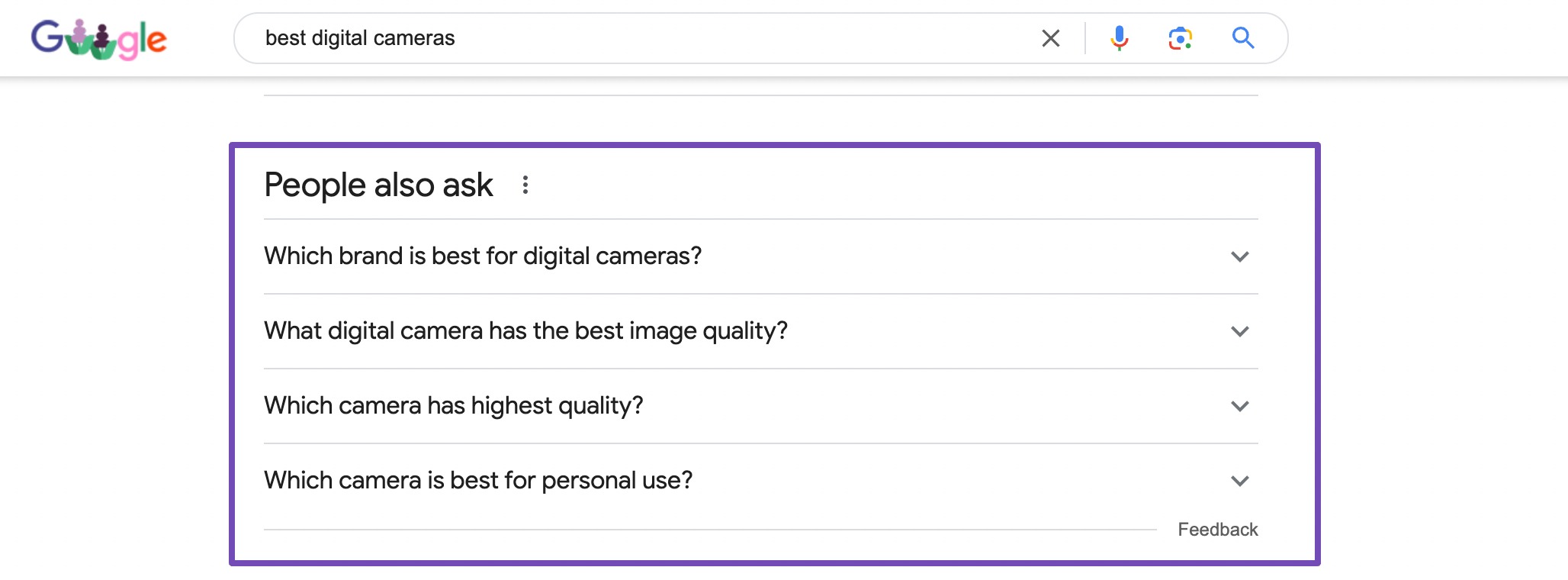
2.5 Rich Snippets
Rich snippets are enhanced search results that include additional information beyond the standard title, URL, and meta description.
Depending on the web page’s content, this additional information may include star ratings, reviews, product prices, event dates, etc.
Rich snippets help the audience quickly assess the relevance and value of search results, leading to higher click-through rates and improved user experience.
For instance, rich snippets may display ratings and cooking times directly on the SERP when searching for a recipe, helping users choose the most suitable result.
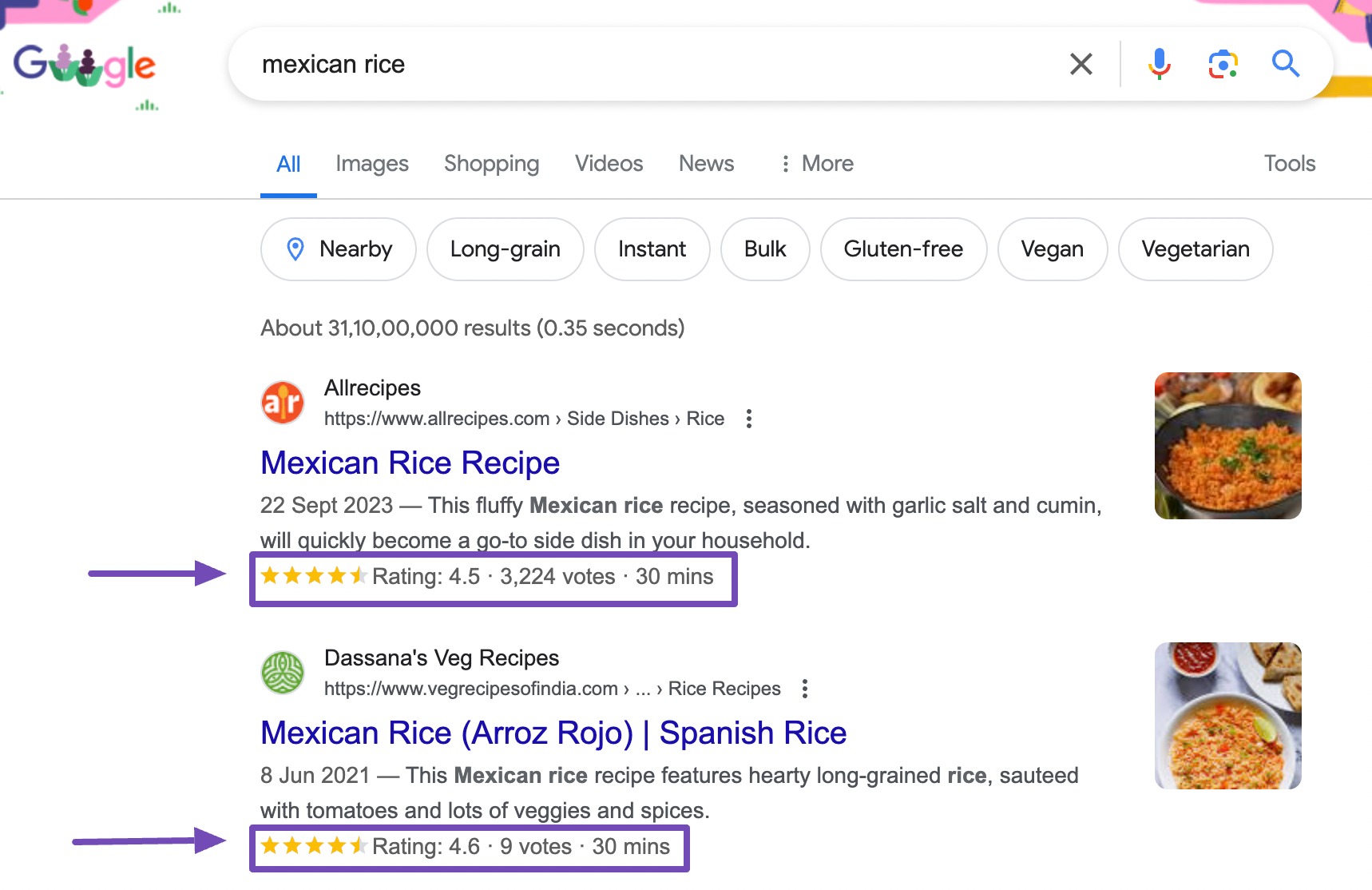
Refer to our dedicated tutorial on Schema Markup to optimize content for rich snippets.
3 How to Perform SERP Analysis
Now that you understand the different types of SERP results, let’s discuss how to perform SERP analysis.
3.1 Assess Keyword Difficulty and Traffic Potential
The first step in SERP analysis is to assess keyword difficulty and traffic potential.
Keyword difficulty refers to the competitiveness of ranking for a specific keyword. It involves analyzing factors such as the number of competing websites targeting the keyword, their authority, and the strength of their backlink profiles.
For instance, a keyword like “best smartphones” have a high difficulty due to intense competition among websites. You can check the difficulty of keywords using tools like Semrush Keyword Overview or Ahrefs Keyword Explorer.

Conversely, traffic potential estimates the volume of organic search traffic a keyword can generate. It relies on metrics like search volume, indicating how frequently audiences search for a particular keyword. Keywords with high search volumes typically have greater traffic potential.
For instance, a keyword like “cheap flights to Paris” has significant traffic potential due to its high search volume and clear user intent.
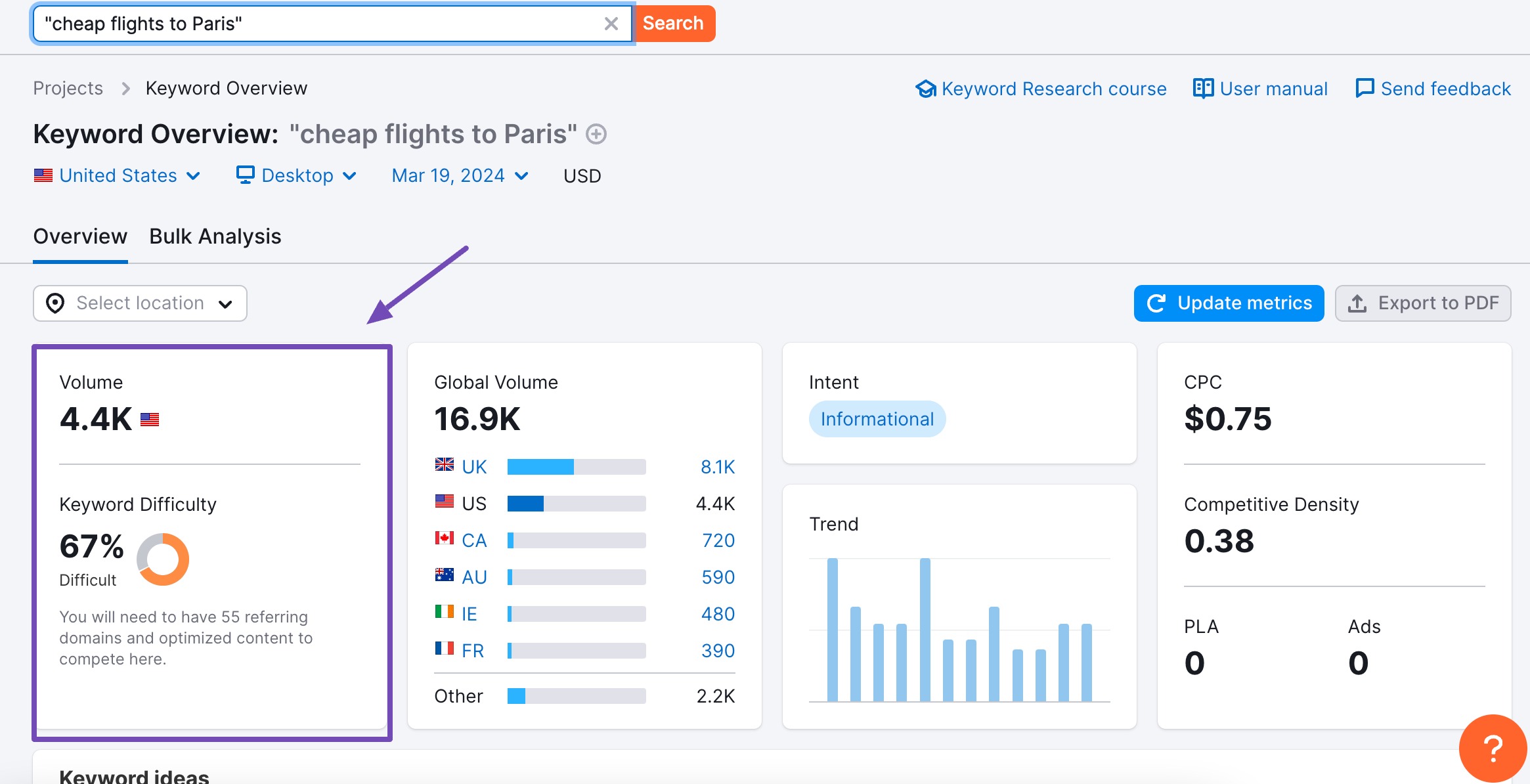
In SERP analysis, balancing keyword difficulty with traffic potential is essential. Targeting keywords with moderate difficulty and a substantial traffic potential can optimize efforts, increasing the likelihood of ranking well in search results and attracting valuable organic traffic.
Refer to our keyword research post to understand the core concepts in detail.
3.2 Understand Search Intent
Search intent is another aspect of SERP analysis. It is important to understand the underlying motivation behind the audience’s search query.
This involves understanding what your audience seeks when entering specific keywords into search engines.

By categorizing search intent into informational, navigational, transactional, or commercial investigation, you can tailor the content to align with the audience’s needs and preferences effectively.
To perform search intent analysis, examine the types of search results that appear for a given keyword and identify patterns.
If the majority of search results include product listings or e-commerce sites, the search intent is likely transactional. Conversely, the intent is likely informational if search results consist of informational articles or how-to guides.
For instance, if someone searches for an iPhone 13 Pro Max, their intent is transactional. They actively want to purchase a specific product, indicating a clear intent.
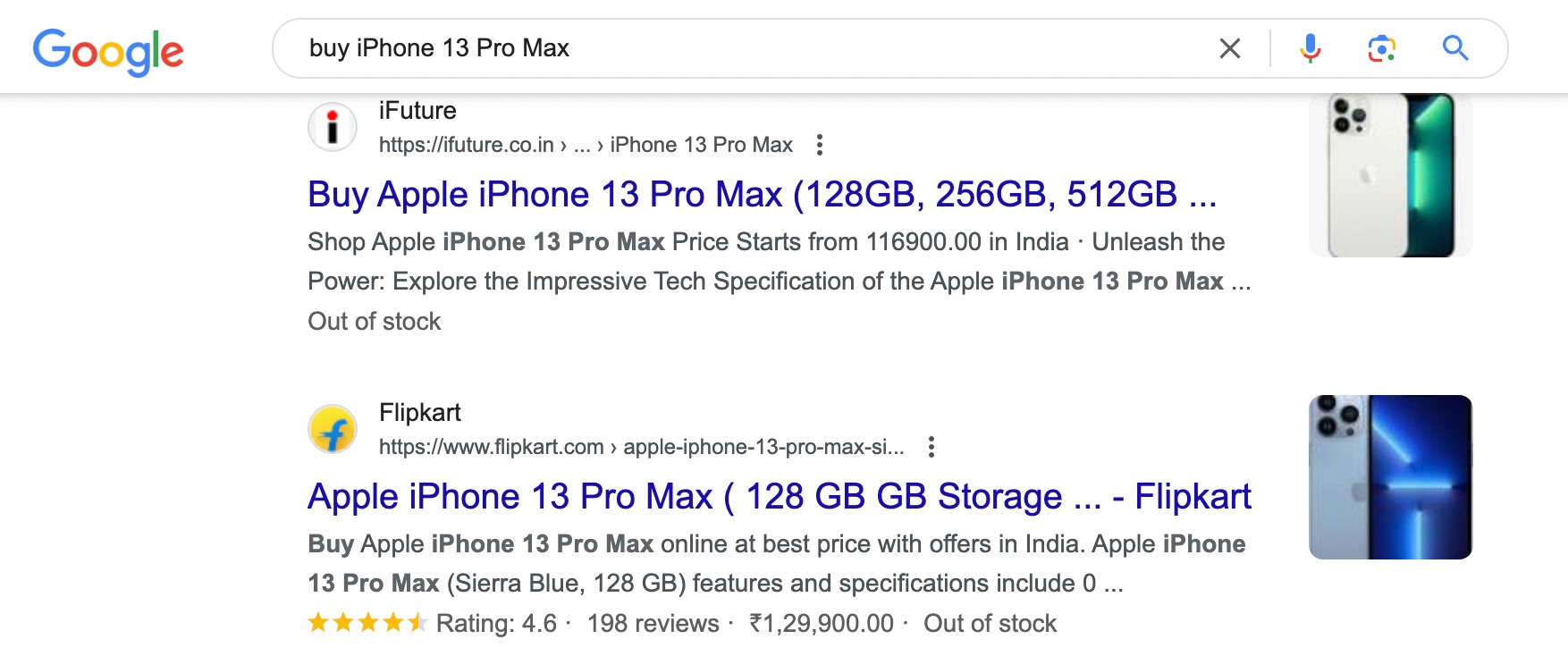
3.3 Analyze Search Results
The next step in SERP analysis is to analyze your organic search results to evaluate the various aspects of the top-ranking pages.
Analyze the relevance, depth, and uniqueness of content on top-ranking pages. For instance, if your audience searches for “best smartphones,” top-ranking pages should provide comprehensive reviews, specifications, and comparisons of different smartphone ******.
Examine the search results displayed by search engines for a specific keyword. This can help determine its competitiveness and whether it’s advisable to target it.
For instance, if a SERP for the keyword “best credit cards” features government websites or high-authority financial institutions, it suggests intense competition and may not be ideal for targeting. In such cases, it might be more challenging for a smaller website or business to rank well against established entities.
Therefore, based on SERP analysis, focusing on keywords where there is a better opportunity to compete and rank effectively is recommended.
Also, examine the quantity and quality of backlinks pointing to the top-ranking pages. According to Backlinko’s study, pages with a strong backlink profile are more likely to rank higher in search results.

Also, check the metrics such as click-through rate, conversions, domain rating, and overall usability of the top-ranking pages.
Identify topics or aspects related to the search query that are not adequately covered by the top-ranking pages.
For instance, if top-ranking pages for “content marketing tips” lack information on video content strategies, there may be an opportunity to create content focusing specifically on that topic.
Assessing the quality and relevance of content on competitor pages ranking below the top positions. Weak competitor content may present an opportunity to create more comprehensive and informative content that better meets user needs.
3.4 Assess and Optimize Your Content
Assess your content for SERP analysis by evaluating its relevance, quality, and alignment with user intent to enhance its performance in search engine rankings.
Ensure that your content aligns with target keywords, ensuring relevance to your audiences’ queries. Prioritize the quality and depth of your content by providing valuable and comprehensive information.
This can include detailed guides, infographics, or videos that enrich the audience’s experience and demonstrate expertise on the topic.
It is also essential to optimize your content for user experience by ensuring readability, usability, and mobile-friendliness. Clear headings, bullet points, and responsive design contribute to a positive user experience, improving engagement and retention.
3.5 Check for Other Opportunities
Check for other opportunities beyond the top-ranking pages.
This includes checking for other SERP types, such as featured snippets, People Also Ask (PAA) boxes and related searches.
By analyzing the types of content that appear in featured snippets and optimizing your content to address common questions or topics, you can increase the likelihood of being featured, thereby enhancing your visibility and credibility.
For instance, when examining the SERP (Search Engine Results Page) for the query “how long to cook homemade pizza at 400”, you’ll notice it doesn’t just show organic search results. Instead, it features a highlighted snippet alongside a People Also Ask (PAA) box.
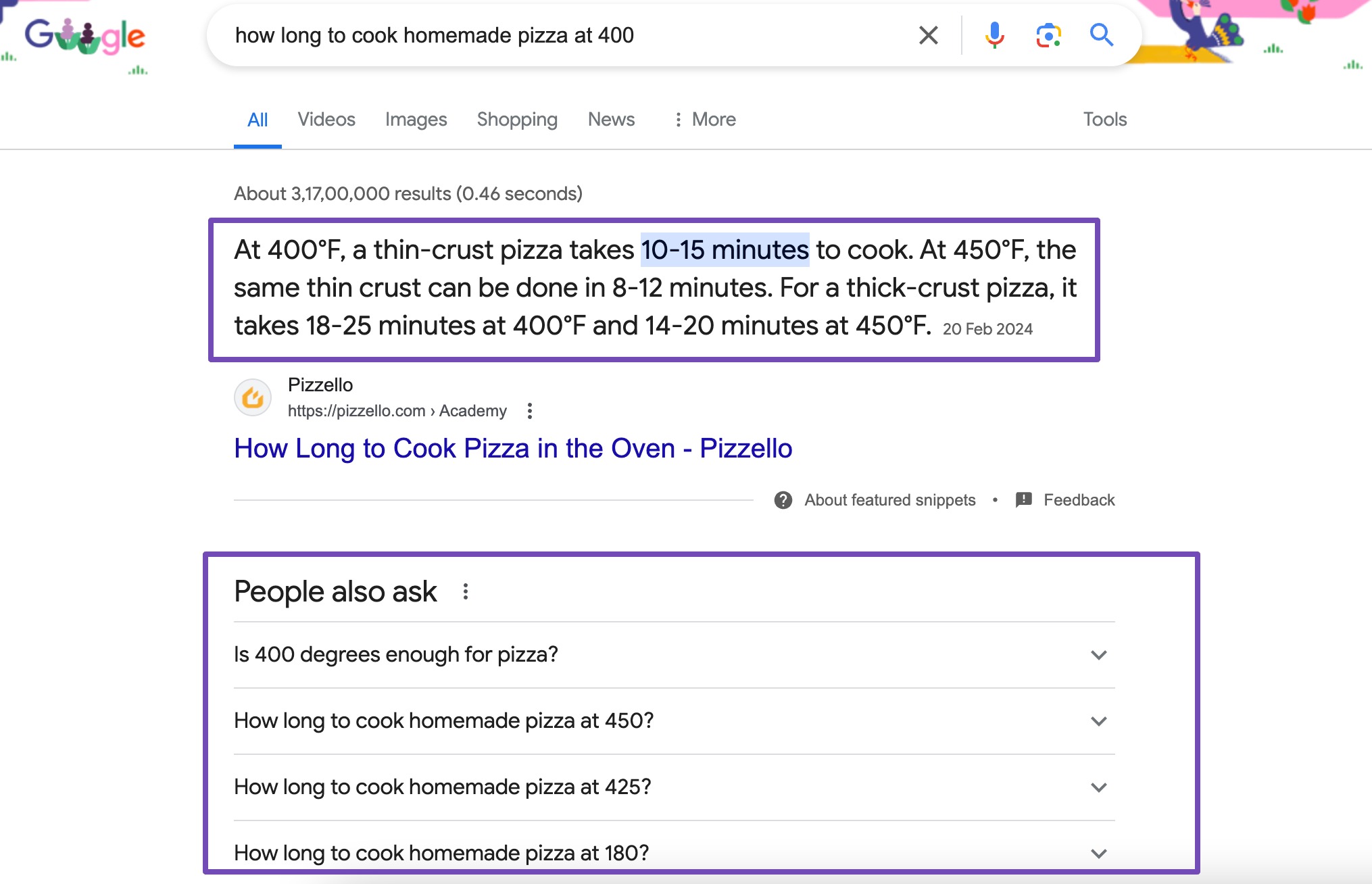
Exploring PAA boxes allows you to identify common questions related to your target keywords, enabling you to create content that directly addresses these queries and establishes your authority on the subject.
You can enhance your content to target these SERP features, increasing the likelihood of your page appearing at the top of the search results as one of these features.
4 Conclusion
By studying search engine results pages and understanding what your audiences’ are looking for, you can improve your website’s visibility and attract more visitors.
Remember to focus on creating helpful and relevant content, and keep an eye out for new trends and opportunities.
With a bit of practice and attention to detail, you’ll be well on your way to performing SERP analysis and achieving your goals.
If you like this post, let us know by Tweeting @rankmathseo.
